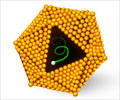Reperfusion of a previously ischemic tissue is associated with additional injury leading to structural and functional alterations in many organs including the liver.
Reperfusion of a previously ischemic tissue is associated with additional injury leading to structural and functional alterations in many organs including the liver. The injury induced during reperfusion is evolved a biphasic pattern consisting of an early stage started upon reoxygenation and a delayed phase.
It is thought that reactive oxygen species formation during reperfusion induces a cascade of series of cellular events that eventually leads to hepatocellur injury. However, the detailed mechanisms of cell death and the structural alterations induced during different stages of reperfusion injury i.e. the early stage, are not completely determined yet.A research article to be published on April 28, 2009 in the World Journal of Gastroenterology addressed this question. The research team led by Dr. HA Arab at University of Tehran carried out a study to characterize the feature of the injury induced in the early stage of reperfusion in the rat liver.
The authors examined the effects of 60 min lobar ischemia followed by different periods of 5, 10, 30, 45, 60 and 120 min reperfusion. It was found that cell vacoulations, bleb formation and focal hepatitis were the most important changes induced by in vivo lobar ischemia in the rat liver. However, during reperfusion not only some changes including bleb formation was reduced, but some other alterations including portal hepatitis, inflammation and the induction of apoptosis, were occurred.
Biochemical analysis showed that the amounts of lactate dehydrogenase, alanine aminotransfrase and aspartate aminotransfrase, creatinine and urea were significantly increased in the serums obtained from the animals exposed to hepatic ischemia-reperfusion.
The results of this study indicate that the occurrence of inflammation and the subsequent cell death by apoptosis are the most important changes in the early stage of hepatic reperfusion injury and the presence of apoptotic bodies were augmented as the time of reperfusion was increased.
Source-Eurekalert
SRM















